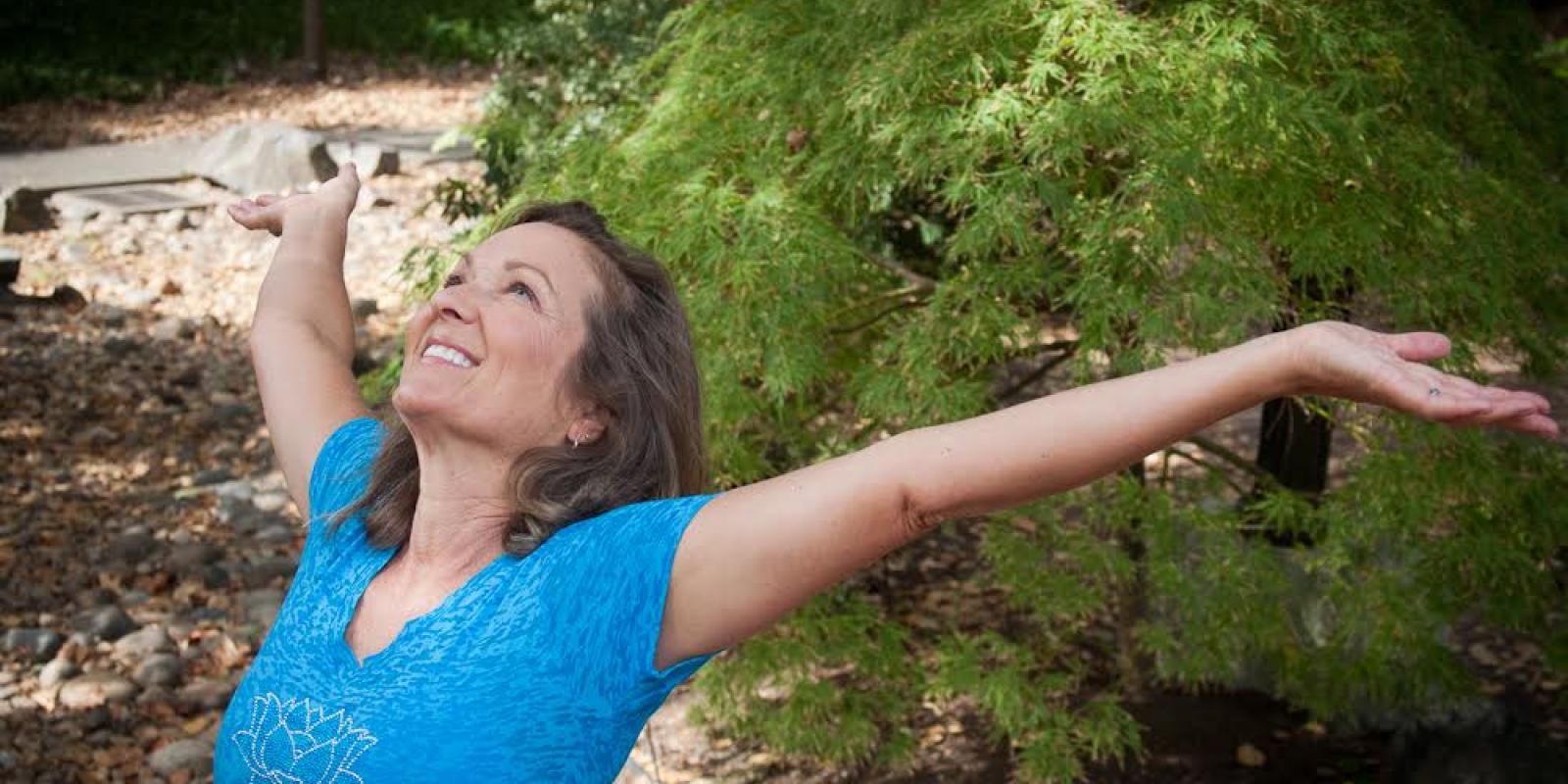When I was a young girl, I loved nothing more than to spend hours turning cartwheels on the grass, practicing my splits or perfecting the steps to my latest dance routine as a 45 whirled on my plastic record player. The feeling of movement through space filled me with joy and delight.
It should come as no surprise then, that as a teen and an adult, I developed a natural affinity for the practice of yoga. I don’t actually recall the first time I picked up a yoga mat or attended a class (many details of my life have been lost!), but in some sense it seems as if I’ve always practiced yoga. One of my wise teachers described the practice of yoga as “any movement linked to the breath.” Little did I know that I was engaging in this ancient sacred practice, even in my youth.
Now at age 62, as my practice has grown, deepened, and refined as a student and now as an instructor of yoga, my mat has become a kind of refuge. It is a place of challenge and also one of solace, where I can test the limits of my strength, flexibility and balance at one moment, and rest and recharge with my breath in the next.
Most recognize the practice of yoga as a physical practice although asanas (yoga poses) and pranayama (breath practices) are only two of yoga’s eight limbs. Beyond the physical practice, I find my values and beliefs align with many of the core principles of the other six limbs, such as Ahimsa (nonviolence), Satya (truthfulness) and Brahmacharya (moderation) outlined in the Yamas (moral principles.)
I understand that the original intent of yoga, according to the Indian masters, was to prepare the body to sit in meditation—in other words, to prepare us to be fully present in the moment with whatever arises. This idea has always been a worthwhile pursuit for me, given the reality that the present moment is all we can affect.
As is the case with many practitioners, my life on the mat in my 20s, 30s and even 40s was filled with much more active (and likely ego-proving) asana. I was drawn to the more intense Vinyasa (flow) yoga classes.
‘I see my role as encouraging acceptance and self-compassion for whatever movement our bodies will allow.’
It used to be (and still is in some classes) that the measure of a good practice was the number of chaturangas (a sort of yoga pushup) one could complete. But something in me sought that in-the-moment presence I sensed yoga could offer. Now chaturanga is optional or modified, as are all of the movements in my class.
As I have matured, my practice and my teaching have embraced the slower, more mindful and intentional movement reflected in Hatha yoga—more connected to my breath, and more embodied. And while I still enjoy flipping into a handstand and playing with balance, I more often relish the sweetness of savasana (resting pose) to counter life’s demands and often frantic pace.
In my classes, I encourage movement that fits intention. If one’s intention is to recharge, the slower, gentler, more supported version of an asana may be advisable. If the intention is to energize, one might choose a more challenging backbend. If the intention is to prove one’s worth, then it may be best to find another class.
As another of my wise teachers said, “Look around the room—the most advanced of yogis will be resting in child’s pose.”
As I look around my Sunday morning class I am inspired by these mostly older than 50 women (and a few brave men) who show up week after week to attend to their bodies and quiet their minds. Everyone (including me) has a body story—“my knees hurt,” “my hip was replaced,” “my shoulder is frozen.” I see my role as encouraging acceptance and self-compassion for whatever movement our bodies will allow. I see their practice progress, but what excites me more is to see students practice in a way that serves and nourishes them individually.
Recently I attended the class of an 80-something teacher who has been teaching for more than 50 years. I was inspired by her strength and focus. It reminded me that this is a lifelong practice. It is accessible even as you raise your arms with a deep inhale, or walk across the living room with the support of a walker, feeling your breath fuel the muscles of your legs as they transport you. Yoga needn’t be practiced only in a special studio in a particular type of spandex, because it is welcoming to all.
Any movement linked to the breath. Roll out your mat and join me.
Susan is a psychotherapist and yoga teacher in San Rafael, Calif. Outside of her healing work, she enjoys her two children and family, hiking with her dog, swimming, music and dancing with friends, reading and writing, and a binge-worthy TV show.
Photo caption: Susan Quigley
Photo credit: Courtesy Susan Quigley













